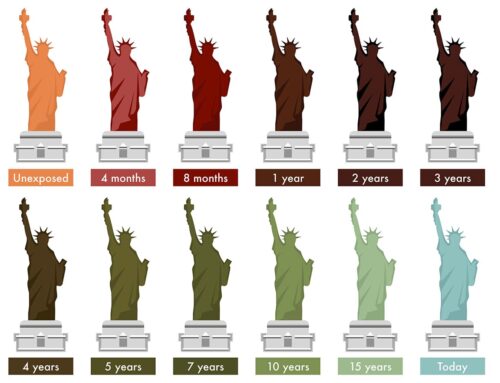Printed Circuit Boards (PCBs) / PWBs (Printed Wiring Boards) are well known in electronics. The first printed circuit board, invented by Paul Eisler, dates back to 1936. At that time, the conductor tracks were drawn by hand and that was a time-consuming process. The PCB patent was not filed until 1943.
The structure of the circuit board was and is an insulating carrier material with copper tracks that ensure the connections between the components. There are many different types of printed circuit boards today.
The main groups are divided into:
• Rigid printed circuit board, example of a rigid PCB:

• Flexible printed circuit boards, example of a flexible PCB:

• Rigid-flexible printed circuit boards, example of a rigid-flex PCB:

The most common circuit boards are the rigid circuit boards. We can divide this group into: single-sided, double-sided and multi-layer printed circuit boards (multilayer PCBs).



What materials are used for printed circuit boards?
There are many different carrier materials for rigid circuit boards, such as: FR 1 (pressed paper in phenol), FR 2 (Pertinax = pressed cotton in phenol), FR 4 (glass fiber mats in epoxy resin), FR 5 (improved FR 4, for higher temperatures), FR 6, polyamide / Teflon, CEM 1 (paper core with glass fiber in epoxy), CEM 3 (paper core with glass fiber in epoxy), ceramic, metal (copper, aluminum, iron) etc.
The most frequently used circuit board material is the very strong FR 4. FR stands for “flame retardant”. This material consists of glass fiber mats impregnated with epoxy resin. The advantage is that this material is very strong and temperature resistant. At 260 ° C (for 60 minutes), 288 ° C (for 15 minutes), 300 ° C (for 3 minutes) it will not be damaged.
The choice of material depends on the environment of the end product. Important when making a decision, is the temperature (e.g. in the automobile, under the bonnet), the UL qualification (flammability, a circuit board must never cause fire and must therefore be flame-retardant), mechanical forces on the end product, environmental aspects such as moisture-resistant , acid-resistant, UV-resistant etc.
Overview of circuit board materials:

Further information on PCB base materials, can be found at https://www.isola-group.com/pcb-laminates-prepreg/
What types of circuit boards are most commonly used today?
At present, multilayer PCBs are the most widely used type. Since the conductor tracks are built into the circuit board both on the surface and “underground” inside the laminate of these circuit boards, the signal speed between the components is the highest, the distance is smaller, thus less signal loss and an additional advantage is that these circuit boards take up less space (compact, fast).

What can we expect in the future?
The future lies in 3D-MID technology (3 Dimensional Molded Interconnect Device).


Since the introduction of the 3D printer, it has been possible to “laser” the tracks directly into the housing. The molded component is then electroplated and etched to create the copper and gold layer on the traces. Finally, the components are soldered directly into the housing with solder paste (in the reflow oven). So without using a printed circuit board!
The housing is the printed circuit board of the future.
However, before the “normal” printed circuit board disappears completely from the stage, we will be 60 years further.
Example of a 3D-MID manufactured product:







